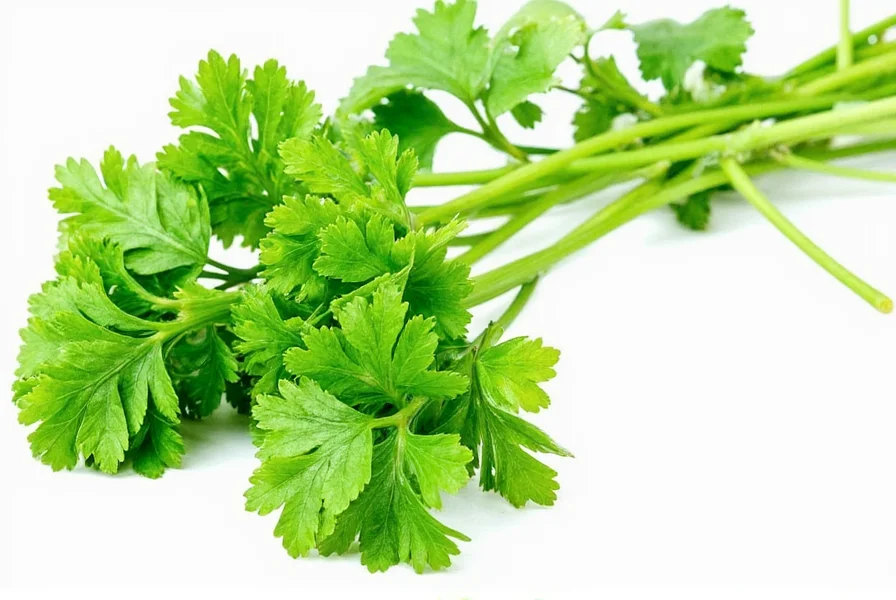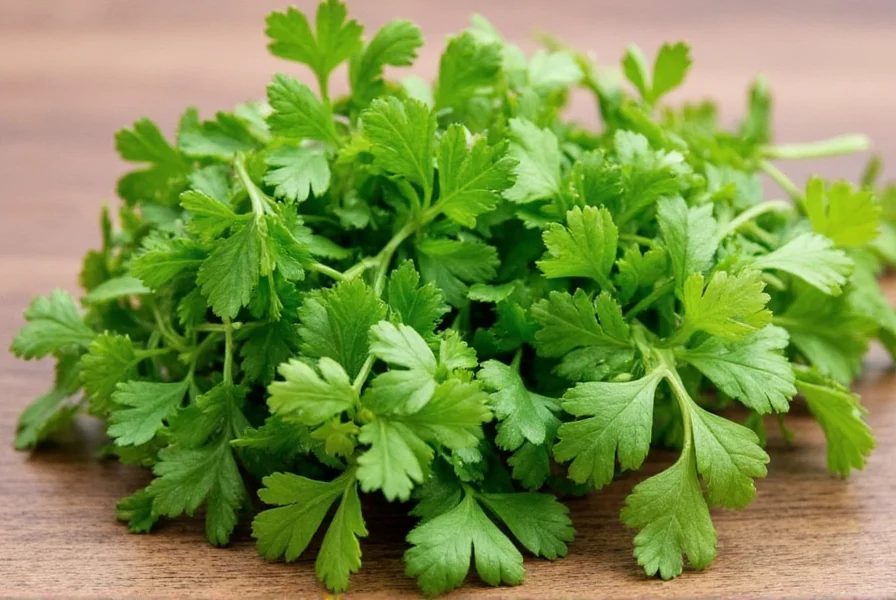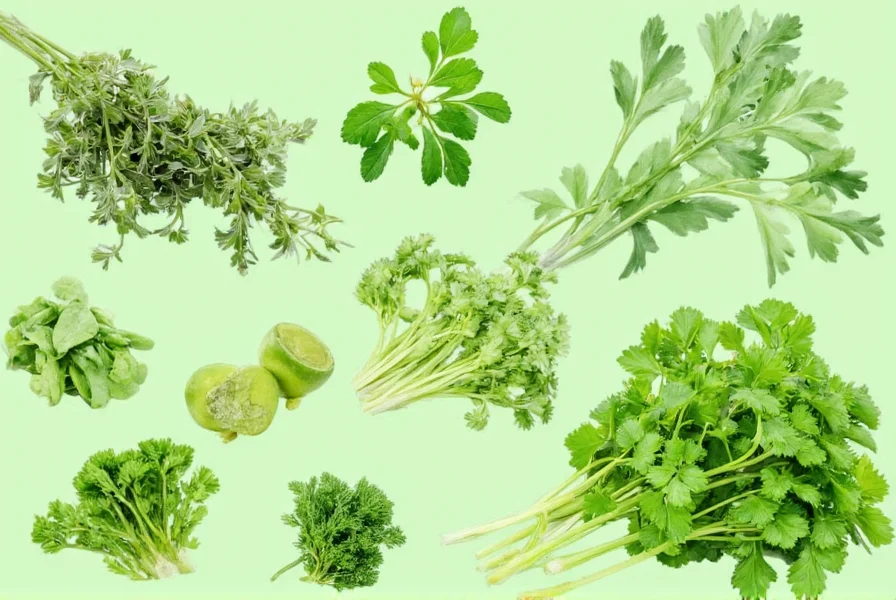If you're searching for coriander cilantro substitute options, the answer depends on whether you need to replace fresh leaves or dried seeds. In American English, 'cilantro' refers to the fresh leaves while 'coriander' typically means the seeds, though terminology varies globally. For fresh cilantro leaves, flat-leaf parsley combined with a small amount of mint or basil provides the closest flavor match. For coriander seeds, cumin works best at a 1:1 ratio in most recipes. The right substitute depends on your specific dish and regional flavor expectations.
Understanding the terminology confusion is crucial when seeking coriander cilantro substitute solutions. What Americans call 'cilantro' (the fresh leaves and stems of Coriandrum sativum) is often called 'coriander' in British English and many other regions, while 'coriander' in American usage typically refers only to the dried seeds. This linguistic difference causes significant confusion when searching for ingredient alternatives.
Why Substitution Is Necessary
Many home cooks face the challenge of finding suitable coriander cilantro substitute options due to regional availability, personal taste preferences (some people have the 'cilantro gene' that makes it taste soapy), or simply running out of this essential herb mid-recipe. The good news is that several alternatives work well depending on your specific culinary application.
Best Substitutes for Fresh Cilantro Leaves
When you need a fresh coriander cilantro substitute for the leafy portion, consider these options ranked by effectiveness:
| Substitute | Best For | Ratio | Flavor Notes |
|---|---|---|---|
| Flat-leaf parsley + mint | Salsas, guacamole, salads | 3:1 parsley to mint | Fresh, slightly peppery with herbal brightness |
| Culantro (recao) | Caribbean, Latin American dishes | 1:1 | Stronger flavor, use slightly less |
| Basil + parsley | Asian-inspired dishes | Equal parts | Sweeter profile, less citrusy |
| Arugula | Cold dishes, salads | 1:1 | Peppery bite, best when finely chopped |
Finding the Right Coriander Seed Replacement
When substituting for coriander seeds (often called just 'coriander' outside the US), the flavor profile shifts to earthy, citrusy notes rather than the fresh herbal quality of the leaves. The best coriander seed substitute depends on your recipe's requirements:
- Cumin: The most versatile coriander seed replacement, especially in Middle Eastern and Indian dishes. Use equal amounts, but reduce slightly if the recipe already contains cumin.
- Caraway seeds: Works well in European recipes where coriander appears in breads or sausages. Use 3/4 the amount of coriander called for.
- Fennel seeds: Best for Mediterranean dishes. Use 1:1 ratio but toast first to enhance earthiness.
- Curry powder: When substituting in curries, use 1.5 tsp curry powder for each tsp of coriander seed.
Cuisine-Specific Substitution Guide
The ideal coriander cilantro substitute varies significantly by culinary tradition. Understanding regional flavor expectations helps you choose the most appropriate alternative:
Mexican and Latin American Cuisine
For authentic-tasting cilantro substitute in salsa or guacamole, combine flat-leaf parsley with a pinch of dried oregano and lime zest. Culantro (recao) works exceptionally well if available, though its stronger flavor means using 25% less than the recipe specifies for cilantro.
Indian and Southeast Asian Dishes
When seeking a coriander leaf alternative for Indian recipes, try a combination of mint and Thai basil. For curry dishes requiring coriander seeds, a mix of cumin and cardamom (2:1 ratio) provides the closest flavor profile. Many traditional Indian cooks actually consider cumin the standard coriander seed replacement in everyday cooking.
Middle Eastern and Mediterranean Cooking
For tabbouleh or other Middle Eastern dishes, a combination of parsley and dill makes an excellent fresh coriander substitute. When replacing coriander seeds in baharat or other spice blends, use equal parts cumin with a pinch of allspice.
Practical Tips for Successful Substitution
Implementing the right coriander cilantro substitute requires attention to preparation methods:
- Chop finely: Whatever substitute you choose, mince it very finely to mimic cilantro's texture
- Add late: For fresh herb substitutes, add during the last 5 minutes of cooking to preserve flavor
- Adjust acidity: Since cilantro has natural citrus notes, add a squeeze of lime when substituting with parsley
- Toast seeds: When replacing coriander seeds, always toast alternatives like cumin to enhance flavor complexity

Special Considerations for Cilantro Haters
If you're searching for coriander cilantro substitute options because you dislike cilantro's flavor (possibly due to the OR6A2 gene that makes it taste soapy to some people), focus on substitutes with different flavor profiles. For Mexican dishes, try a combination of oregano and scallions; for Asian recipes, mint works better than parsley. The key is finding alternatives that provide the necessary texture without the offending flavor notes.
When Substitution Isn't Possible
Some dishes simply don't work without genuine cilantro or coriander. Traditional chimichurri, certain Thai curries, and authentic pico de gallo rely heavily on cilantro's unique flavor. In these cases, consider modifying the recipe rather than substituting—perhaps making a parsley-based chimichurri instead of attempting a direct cilantro replacement.

Final Recommendations
The most effective coriander cilantro substitute depends on whether you need to replace fresh leaves or dried seeds, your specific recipe, and regional flavor expectations. For immediate cooking needs, keep these guidelines in mind:
- For fresh cilantro: 3 parts flat-leaf parsley + 1 part mint = best all-purpose substitute
- For coriander seeds: equal parts cumin = most versatile replacement
- For Mexican dishes: culantro or parsley with lime zest
- For Indian recipes: cumin-cardamom blend for seeds, mint-basil for leaves
Frequently Asked Questions
Can I use dried cilantro as a substitute for fresh?
Dried cilantro makes a poor substitute for fresh cilantro as it loses most of its distinctive flavor during dehydration. Use only 1/3 the amount of dried cilantro compared to fresh, but recognize that the flavor profile will be significantly different. For most applications, fresh parsley with mint works better than dried cilantro.
What's the best cilantro substitute for guacamole?
For guacamole, the best cilantro substitute is flat-leaf parsley combined with a small amount of mint (3:1 ratio). Add an extra squeeze of lime to compensate for the missing citrus notes in cilantro. Finely chop the herbs and add them just before serving to maintain freshness.
Can I skip coriander seeds entirely in a recipe?
You can omit coriander seeds in most recipes, but the dish will lack its distinctive citrusy-earthy flavor. If substituting isn't possible, increase complementary spices by 25% (like cumin in curries or caraway in breads) to maintain flavor balance. In spice-heavy dishes like curry powders, skipping coriander seeds significantly alters the authentic flavor profile.
Is culantro the same as cilantro?
Culantro (Eryngium foetidum) is a different plant from cilantro (Coriandrum sativum) but has a similar flavor profile, though stronger and more persistent. It works as an excellent cilantro substitute, particularly in cooked dishes, but use 25% less than the recipe specifies for cilantro due to its more intense flavor. Culantro holds up better during cooking than regular cilantro.
What's a good coriander seed substitute for baking?
For baking applications like gingerbread or spice cakes, caraway seeds make the best coriander seed substitute at a 3:4 ratio (use 3/4 teaspoon caraway for every teaspoon of coriander). Fennel seeds also work well in sweet applications, especially when combined with a pinch of allspice to mimic coriander's citrus notes.











 浙公网安备
33010002000092号
浙公网安备
33010002000092号 浙B2-20120091-4
浙B2-20120091-4